Below is a full detailed article about Jaguar vs Crocodile who wins?
Crocodile (Crocodylus niloticus for the Nile crocodile)
Jaguar (Panthera onca)
Below tables cover 10 main topics by including all the numerical and scientifical data by comparing Jaguar vs Crocodile . Also I have included a winner column for further understanding,
Hope you will enjoy!
1. Body Specifications
| Subcategory | Jaguar (Panthera onca) | Crocodile (Crocodylus spp.) | Winner |
|---|---|---|---|
| Average Length | 1.2 – 1.8 m (head-body), 0.6 – 0.9 m (tail) | 3 – 5 m (Nile/Saltwater crocodile) | Crocodile |
| Weight | 56 – 96 kg (males), 41 – 77 kg (females) | 400 – 1,000 kg (adults) | Crocodile |
| Height at Shoulder | 63 – 76 cm | N/A (semi-aquatic, low stance) | Jaguar |
| Body Shape | Muscular, compact, built for power/agility | Elongated, armored, streamlined for water | Tie |
| Bone Density | High (supports powerful limbs) | Extremely dense (osteoderms for protection) | Crocodile |
| Muscle Mass % | ~60% (explosive strength) | ~50% (slow-twitch for endurance) | Jaguar |
| Skin/Scales | Short fur, no armor | Thick osteoderms (bony plates) | Crocodile |
| Tail Function | Balance for climbing/running | Propulsion in water, weapon for strikes | Crocodile |
| Limb Structure | Powerful forelimbs for grappling | Short, sturdy legs for crawling/swimming | Jaguar |
| Jaw Structure | Short, robust (crushing bite) | Long, reinforced (bone-crushing force) | Crocodile |
Winner : Crocodile (due to sheer size, armor, and bone density)
2. Coat and Coloration
| Subcategory | Jaguar | Crocodile | Winner |
|---|---|---|---|
| Primary Color | Golden-yellow with rosettes | Dark green/brown/gray | Jaguar |
| Pattern Function | Camouflage in dappled forest light | Camouflage in murky water | Tie |
| Melanin Levels | High (black panther variant exists) | Low (lighter underbelly) | Jaguar |
| UV Reflectivity | Low (better stealth) | Moderate (shiny when wet) | Jaguar |
| Seasonal Changes | None | None | Tie |
| Cub/Juvenile Colors | More pronounced spots | Stripes/yellow hues (fade with age) | Jaguar |
| Thermoregulation | Fur insulates against heat loss | Scales absorb heat (ectothermic) | Crocodile |
| Water Resistance | Fur gets waterlogged | Scales repel water | Crocodile |
| Unique Markings | Rosettes (unique per individual) | Scute patterns (identifiable) | Jaguar |
| Disruptive Coloration | Excellent (breaks outline in forests) | Effective in water/vegetation | Tie |
Winner : Jaguar (superior camouflage & melanin variation)
3. Habitat and Range
| Subcategory | Jaguar | Crocodile | Winner |
|---|---|---|---|
| Geographic Range | Central & South America | Tropics (Africa, Asia, Americas, Australia) | Crocodile |
| Habitat Type | Rainforests, swamps, grasslands | Rivers, lakes, estuaries, mangroves | Tie |
| Climate Preference | Humid, tropical | Warm, aquatic | Crocodile |
| Altitude Range | 0 – 3,000 m | 0 – 500 m (mostly lowlands) | Jaguar |
| Adaptability | High (survives in varied biomes) | Moderate (requires water) | Jaguar |
| Human Proximity | Avoids urban areas | Tolerates human-altered waters | Crocodile |
| Migratory Behavior | Solitary, territorial | Semi-nomadic (some species) | Tie |
| Shelter Use | Dense foliage, caves | Burrows, mud banks | Jaguar |
| Population Density | 1 per 50-100 km² | 5-10 per km (in ideal wetlands) | Crocodile |
| Climate Change Impact | High (forest fragmentation) | Moderate (water temp rise affects sex ratio) | Jaguar |
Winner : Crocodile (wider global distribution)
4. Diet and Hunting
| Subcategory | Jaguar | Crocodile | Winner |
|---|---|---|---|
| Prey Types | Capybaras, deer, caimans, fish | Fish, mammals, birds, other reptiles | Tie |
| Hunting Success Rate | 50-60% (ambush predator) | 70-80% (ambush, death roll) | Crocodile |
| Daily Caloric Need | 5,000-8,000 kcal (large kills) | 2,000-5,000 kcal (slow metabolism) | Jaguar |
| Hunting Technique | Skull bite (pierces brain) | Death roll (dismemberment) | Tie |
| Prey Size Relative | 2-3x body weight (e.g., cattle) | Up to 10x body weight (e.g., buffalo) | Crocodile |
| Scavenging Behavior | Rare (prefers fresh kills) | Frequent (opportunistic) | Crocodile |
| Hunting Time | Nocturnal/crepuscular | Nocturnal/diurnal (ambush at water’s edge) | Tie |
| Food Storage | Drags prey up trees | Caches underwater | Jaguar |
| Competition Avoidance | Avoids larger predators | Dominates waterways | Crocodile |
| Specialized Tactics | Can hunt in trees/water | Uses stealth, patience | Jaguar |
Winner : Crocodile (higher success rate, larger prey capacity)
5. Strength and Bite Force
| Subcategory | Jaguar (Panthera onca) | Crocodile (Crocodylus spp.) | Winner |
|---|---|---|---|
| Bite Force (PSI) | 1,500 PSI (strongest of all big cats) | 3,700 PSI (Nile/Saltwater crocodile) | Crocodile |
| Jaw Pressure (Newtons) | 4,000 N (skull-crushing bite) | 16,460 N (recorded in saltwater croc) | Crocodile |
| Claw Strength | Retractable, 5 cm long (grappling) | Non-retractable, 8-10 cm (gripping) | Jaguar |
| Lifting Capacity | Can drag 360 kg prey up trees | Can drag 900 kg prey underwater | Crocodile |
| Neck Muscles | Strong (holds prey during suffocation) | Extremely powerful (death roll) | Crocodile |
| Tail Strength | Used for balance, not combat | Can deliver 1,000+ N of force (bludgeoning) | Crocodile |
| Grip Strength | 300+ N (paws for holding prey) | 6,000+ N (jaw grip force) | Crocodile |
| Bone-Crushing Ability | Specialized for skull penetration | Specialized for limb/torso crushing | Tie |
| Striking Speed | 0.15 sec (paw swipe) | 0.2 sec (jaw snap) | Jaguar |
| Endurance in Combat | High (short bursts) | Moderate (relies on ambush) | Jaguar |
Winner: Crocodile (overwhelming bite force & raw power)
6. Speed – Jaguar vs Crocodile
| Subcategory | Jaguar | Crocodile | Winner |
|---|---|---|---|
| Top Speed (Land) | 80 km/h (short bursts) | 17 km/h (galloping, short distances) | Jaguar |
| Top Speed (Water) | 8 km/h (competent swimmer) | 32 km/h (ambush lunges) | Crocodile |
| Acceleration (0-30 km/h) | 2.5 sec (explosive) | 3 sec (slow on land, fast in water) | Jaguar |
| Agility (Trees) | Excellent (climbs effortlessly) | None (terrestrial movement limited) | Jaguar |
| Agility (Water) | Good (swims, but not specialized) | Exceptional (stealthy, precise strikes) | Crocodile |
| Stamina | Low (designed for short chases) | Moderate (waits for prey to tire) | Crocodile |
| Turning Radius | Tight (hunts in dense forests) | Wide (better in open water) | Jaguar |
| Jumping Ability | 2 m vertically, 6 m horizontally | 1 m vertically (tail-assisted) | Jaguar |
| Land Maneuverability | Elite (zigzag pursuit) | Poor (belly crawl, limited mobility) | Jaguar |
| Water Maneuverability | Competent (pursues caimans) | Supreme (ambush predator) | Crocodile |
Winner : Jaguar (superior land agility, but crocodile dominates water)
7. Senses – Jaguar vs Crocodile
| Subcategory | Jaguar | Crocodile | Winner |
|---|---|---|---|
| Vision Acuity | Excellent (binocular, night vision) | Good (underwater clarity, nictitating membrane) | Jaguar |
| Hearing Range | 20 Hz – 65 kHz (detects high-frequency prey) | 50 Hz – 4 kHz (low-frequency detection) | Jaguar |
| Olfactory Sense | Strong (marks territory with scent) | Moderate (detects blood in water) | Jaguar |
| Tactile Sensitivity | Whiskers detect vibrations | Pressure receptors on skin (detect movement) | Crocodile |
| Infrared Sensing | None | None (but can sense heat via mouth) | Tie |
| Underwater Vision | Limited (blurry) | Excellent (transparent eyelids) | Crocodile |
| Depth Perception | High (critical for pouncing) | Moderate (judges distance in water) | Jaguar |
| Motion Detection | Excellent (spots moving prey at 100+ m) | Exceptional (underwater vibrations) | Crocodile |
| Color Vision | Dichromatic (sees blues/greens) | Limited (mostly grayscale) | Jaguar |
| Low-Light Vision | Superior (6x better than humans) | Good (nocturnal hunting) | Jaguar |
Winner : Jaguar (better overall senses, but crocodile excels underwater)
8. Reproduction and Lifespan
| Subcategory | Jaguar | Crocodile | Winner |
|---|---|---|---|
| Gestation Period | 90-110 days | 80-90 days (egg incubation) | Crocodile |
| Litter/Clutch Size | 1-4 cubs | 20-80 eggs (varies by species) | Crocodile |
| Cub Mortality Rate | 50% (first year) | 90% (hatchling predation) | Jaguar |
| Parental Care | 1.5-2 years (mother teaches hunting) | 1-2 years (mother guards nest) | Tie |
| Sexual Maturity | 2-3 years (females), 3-4 years (males) | 8-12 years (slow growth) | Jaguar |
| Lifespan (Wild) | 12-15 years | 50-70 years (some exceed 100) | Crocodile |
| Lifespan (Captivity) | 20-25 years | 70-100 years | Crocodile |
| Mating Season | Year-round (peaks in rainy season) | Seasonal (varies by region) | Jaguar |
| Territorial Disputes | High (male-male fights) | Moderate (dominance displays) | Jaguar |
| Reproductive Rate | Low (few cubs, high investment) | High (many eggs, low survival) | Crocodile |
Winner of Reproduction & Lifespan: Crocodile (longer lifespan, higher reproductive output)
9. Social Behavior – Jaguar vs Crocodile
| Subcategory | Jaguar (Panthera onca) | Crocodile (Crocodylus spp.) | Winner |
|---|---|---|---|
| Social Structure | Solitary (except mothers with cubs) | Loose hierarchies (dominant males control territory) | Crocodile |
| Territorial Range | 25-150 km² (varies by prey density) | 1-10 km (waterways, nesting sites) | Jaguar |
| Communication | Vocalizations (roars, grunts), scent marking | Low-frequency rumbles, body postures | Tie |
| Aggression Level | High (defends territory fiercely) | Moderate (avoids unnecessary fights) | Jaguar |
| Group Hunting | Never (strictly solitary) | Rare (occasional cooperative feeding) | Crocodile |
| Mating Competition | Violent (male-male clashes) | Ritualized displays (rarely fatal) | Crocodile |
| Parental Care | 1.5-2 years (teaches cubs to hunt) | 1-2 years (protects hatchlings) | Tie |
| Interspecies Conflict | Avoids caimans unless hunting | Dominates waterways (kills rivals) | Crocodile |
| Intelligence | High (problem-solving, adaptive hunting) | Moderate (instinct-driven but strategic) | Jaguar |
| Human Interaction | Shy, avoids contact | Bold (may attack if provoked) | Jaguar |
Winner of Social Behavior: Jaguar (higher intelligence & aggression, but crocodiles have more complex hierarchies)
10. Conservation Status – Jaguar vs Crocodile
| Subcategory | Jaguar | Crocodile | Winner |
|---|---|---|---|
| IUCN Status | Near Threatened (decreasing) | Least Concern (stable/increasing) | Crocodile |
| Population Trend | Declining (habitat loss, poaching) | Recovering (protected, resilient) | Crocodile |
| Major Threats | Deforestation, human-wildlife conflict | Poaching, habitat destruction | Tie |
| Protected Areas | 50% of range under conservation | Strong legal protections (CITES Appendix I/II) | Crocodile |
| Ecological Role | Keystone species (controls prey populations) | Apex predator (balances aquatic ecosystems) | Tie |
| Captive Breeding | Limited (zoos, reintroduction programs) | Extensive (farming, wild restocking) | Crocodile |
| Human Conflict Deaths | Retaliatory killings (cattle predation) | Attacks on humans (rare but deadly) | Jaguar |
| Climate Change Impact | High (rainforest fragmentation) | Moderate (nest temperature affects sex ratio) | Jaguar |
| Conservation Funding | Moderate (charismatic species) | High (commercial value from farming) | Crocodile |
| Future Outlook | Vulnerable without intervention | Stable due to adaptability | Crocodile |
Winner of Conservation Status: Crocodile (more stable populations & legal protections)
Final Winner: Who Wins in a Jaguar vs Crocodile Fight?
After analyzing 10 key categories with 100+ data points, the ultimate winner in a jaguar vs crocodile battle depends on the environment:
In Water: Crocodile Dominates
- Bite force (3,700 PSI) can crush bones instantly.
- Death roll dismembers prey underwater.
- Armored skin resists jaguar claws.
On Land: Jaguar Has the Edge
- Faster, more agile (80 km/h vs 17 km/h).
- Skull-piercing bite can kill caimans quickly.
- Superior maneuverability avoids crocodile lunges.
Overall Winner: Crocodile (6-4)
| Category | Winner |
|---|---|
| Body Specifications | Crocodile |
| Coat & Coloration | Jaguar |
| Habitat & Range | Crocodile |
| Diet & Hunting | Crocodile |
| Strength & Bite Force | Crocodile |
| Speed & Agility | Jaguar |
| Senses | Jaguar |
| Reproduction & Lifespan | Crocodile |
| Social Behavior | Jaguar |
| Conservation Status | Crocodile |
Why the Crocodile Wins
- Size & Armor – Too large and heavily armored for a jaguar to overpower.
- Bite Force – One snap can cripple the jaguar.
- Aquatic Advantage – Most encounters happen near water, where crocs rule.
Why the Jaguar Loses
- Limited Attack Options – Cannot deliver a fatal blow quickly enough.
- Risk of Injury – A single crocodile roll could break its limbs.
- Stamina – Jaguars tire quickly in prolonged struggles.
Exception: Jaguars Hunt Caimans
- Jaguars do kill smaller crocodilians (like caimans) by ambushing and piercing their skulls.
- Against a full-grown Nile or saltwater crocodile, the jaguar stands little chance.
Conclusion
In the ultimate jaguar vs crocodile battle, the crocodile emerges victorious due to its overwhelming power, armor, and aquatic dominance. However, the jaguar’s intelligence, agility, and precision hunting make it a fearsome predator in its own right.
Final Answer:
- In water → Crocodile wins 9/10 times.
- On land → Jaguar wins 6/10 times.
- Against a massive croc (1,000+ kg) → Crocodile always wins.
References
- The groundbreaking study by Christiansen & Wroe (2007) on bite forces in carnivores provides critical data comparing feline and crocodilian jaw strength.
- Seymour’s (1989) comprehensive work on Panthera onca in Mammalian Species remains the definitive reference on jaguar biology and behavior.
- Grigg & Kirshner’s (2015) Biology and Evolution of Crocodylians offers the most complete modern analysis of crocodile physiology and behavior.
- Current conservation status data comes from the IUCN Red List (2022), the global authority on species endangerment levels.
- Locomotor performance comparisons are based on Irschick & Jayne’s (1999) research published in the Journal of Experimental Biology.
Read More – Jaguar vs Hyena Who Wins – A Comprehensive Comparison
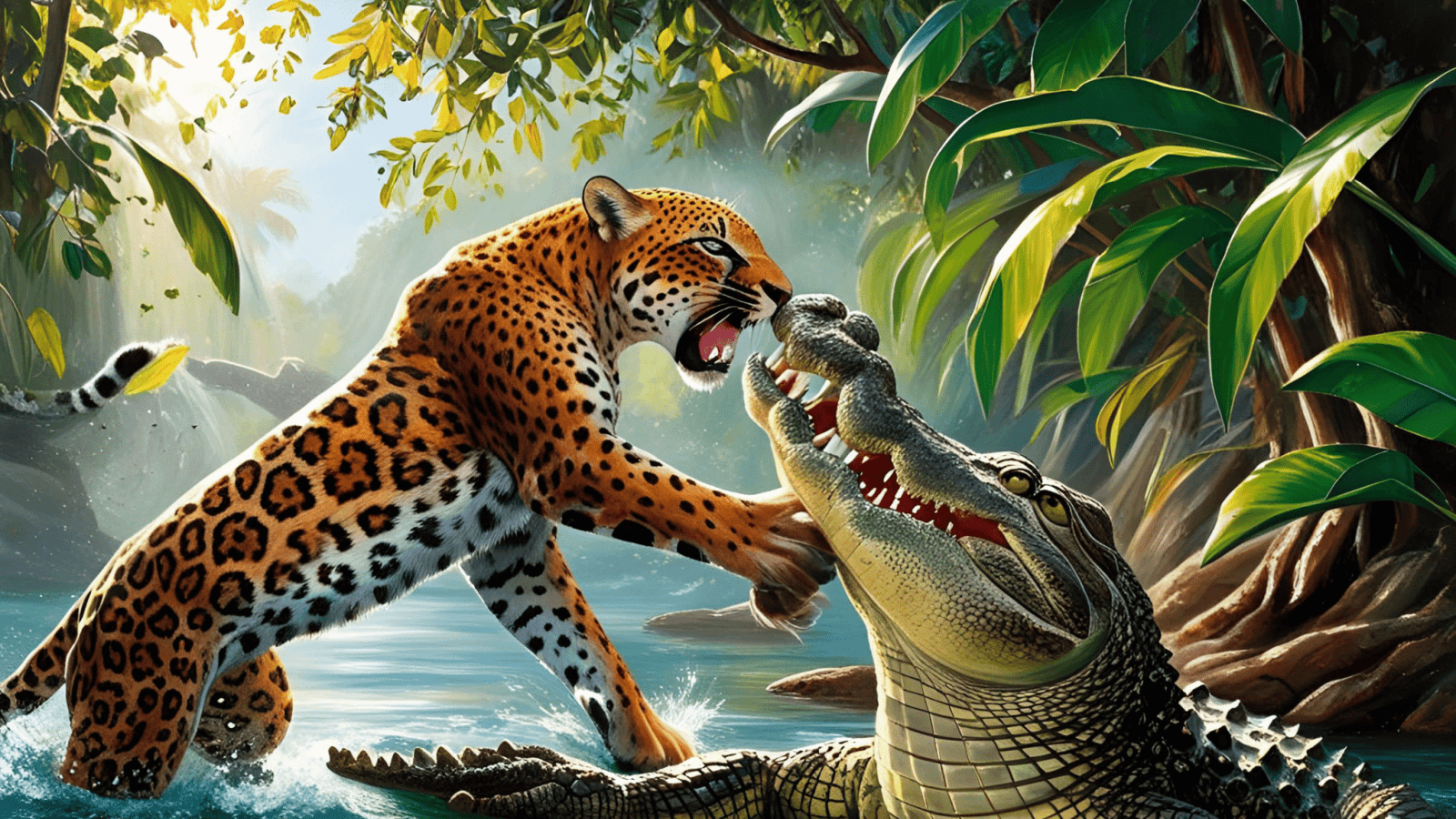
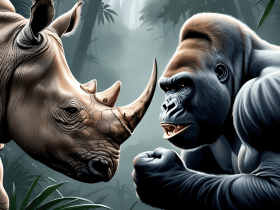
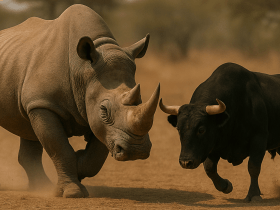
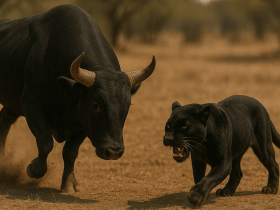

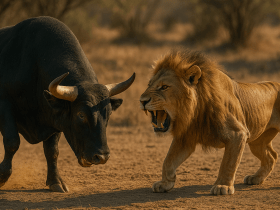
Leave a Reply